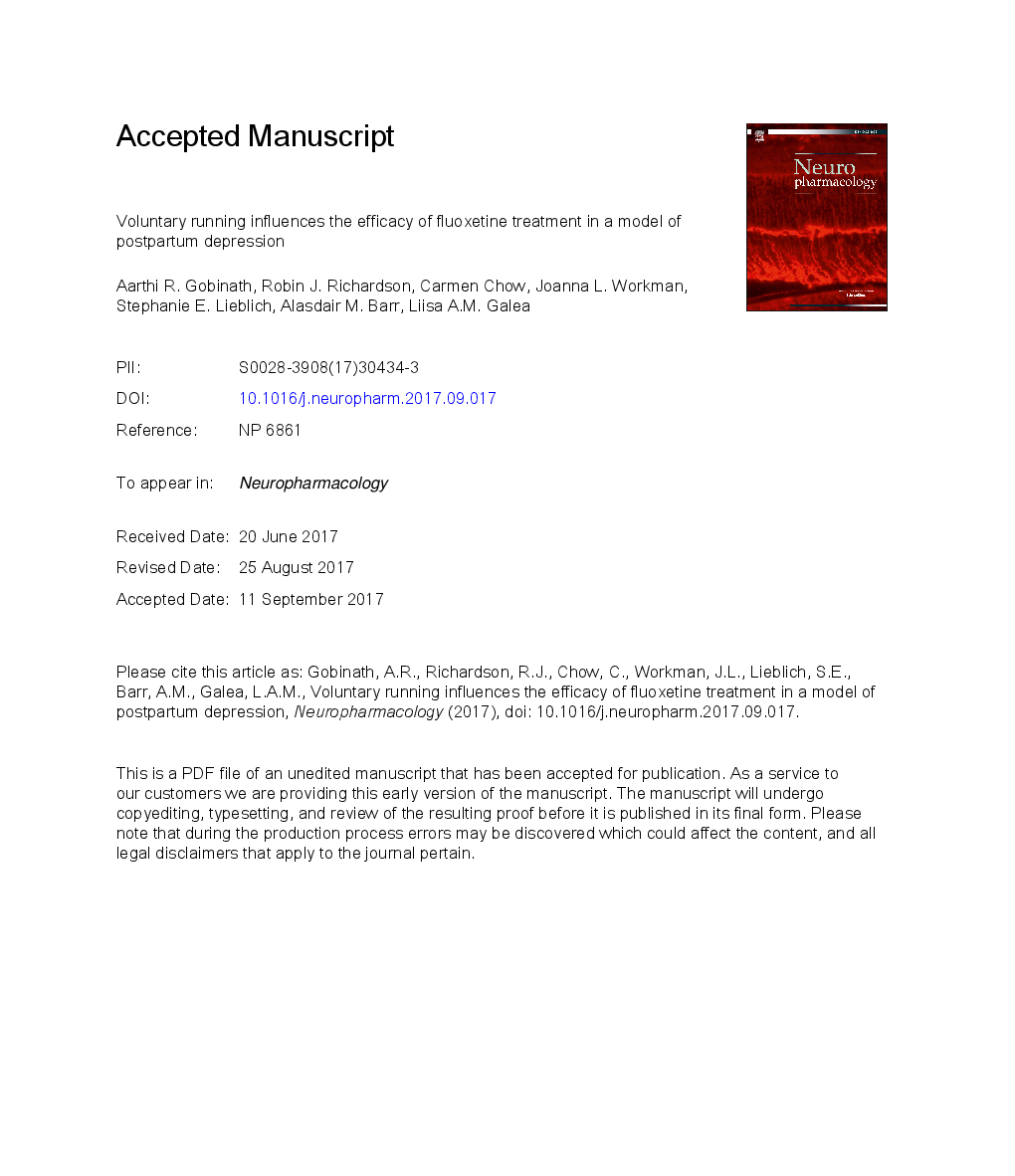ترجمه فارسی عنوان مقاله
تاثیر داوطلبانه بر اثربخشی فلوکستین در یک مدل افسردگی پس از زایمان تاثیر می گذارد
عنوان انگلیسی
Voluntary running influences the efficacy of fluoxetine in a model of postpartum depression
| کد مقاله | سال انتشار | تعداد صفحات مقاله انگلیسی |
|---|---|---|
| 124566 | 2018 | 39 صفحه PDF |
منبع

Publisher : Elsevier - Science Direct (الزویر - ساینس دایرکت)
Journal : Neuropharmacology, Volume 128, January 2018, Pages 106-118
ترجمه کلمات کلیدی
داروهای ضد افسردگی، دوکورتین، گلوکوکورتیکوئیدها، افسردگی پس از زایمان، هیپوکامپ، ورزش، زنان
کلمات کلیدی انگلیسی
Antidepressants; Doublecortin; Glucocorticoids; Postpartum depression; Hippocampus; Exercise; Females;

